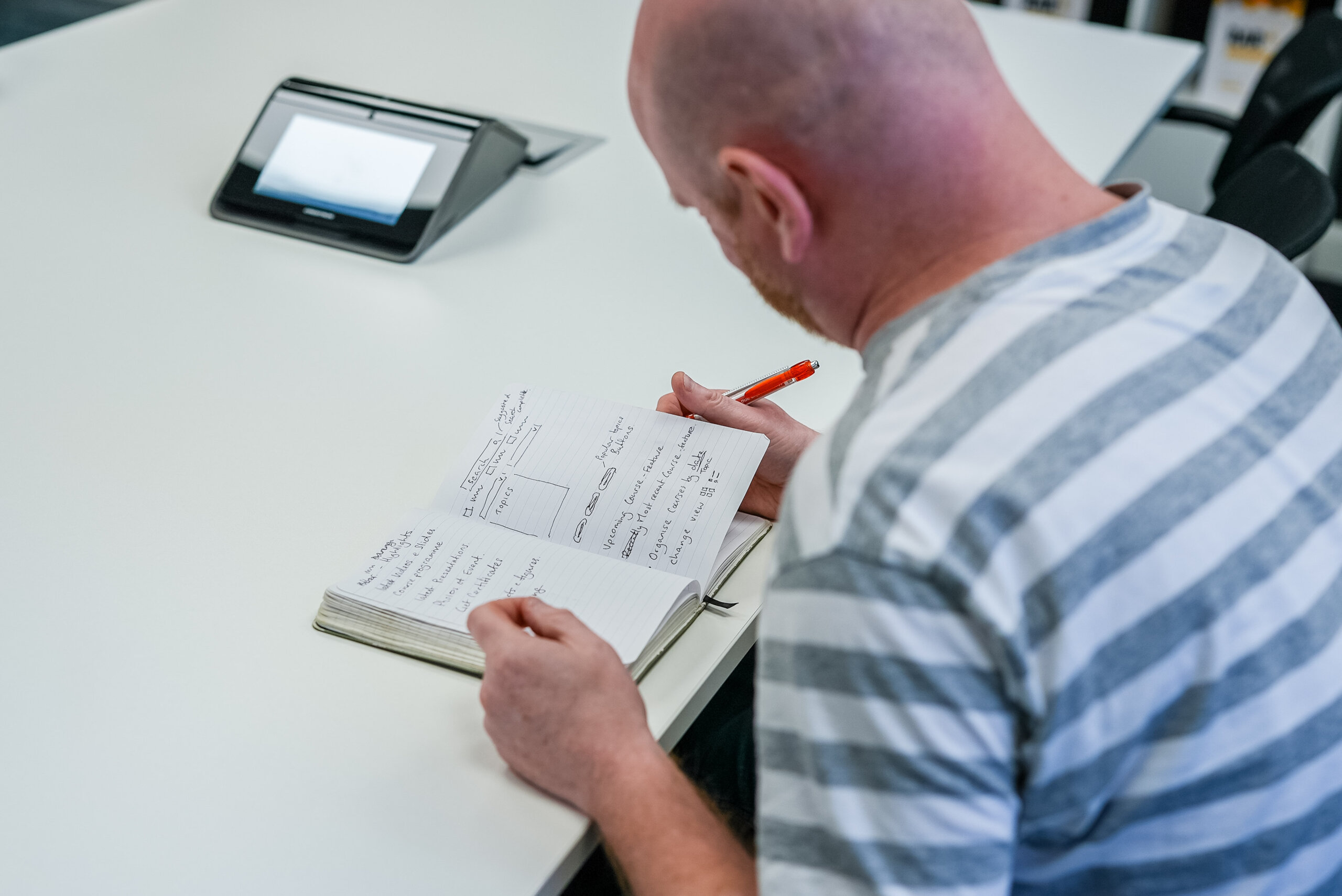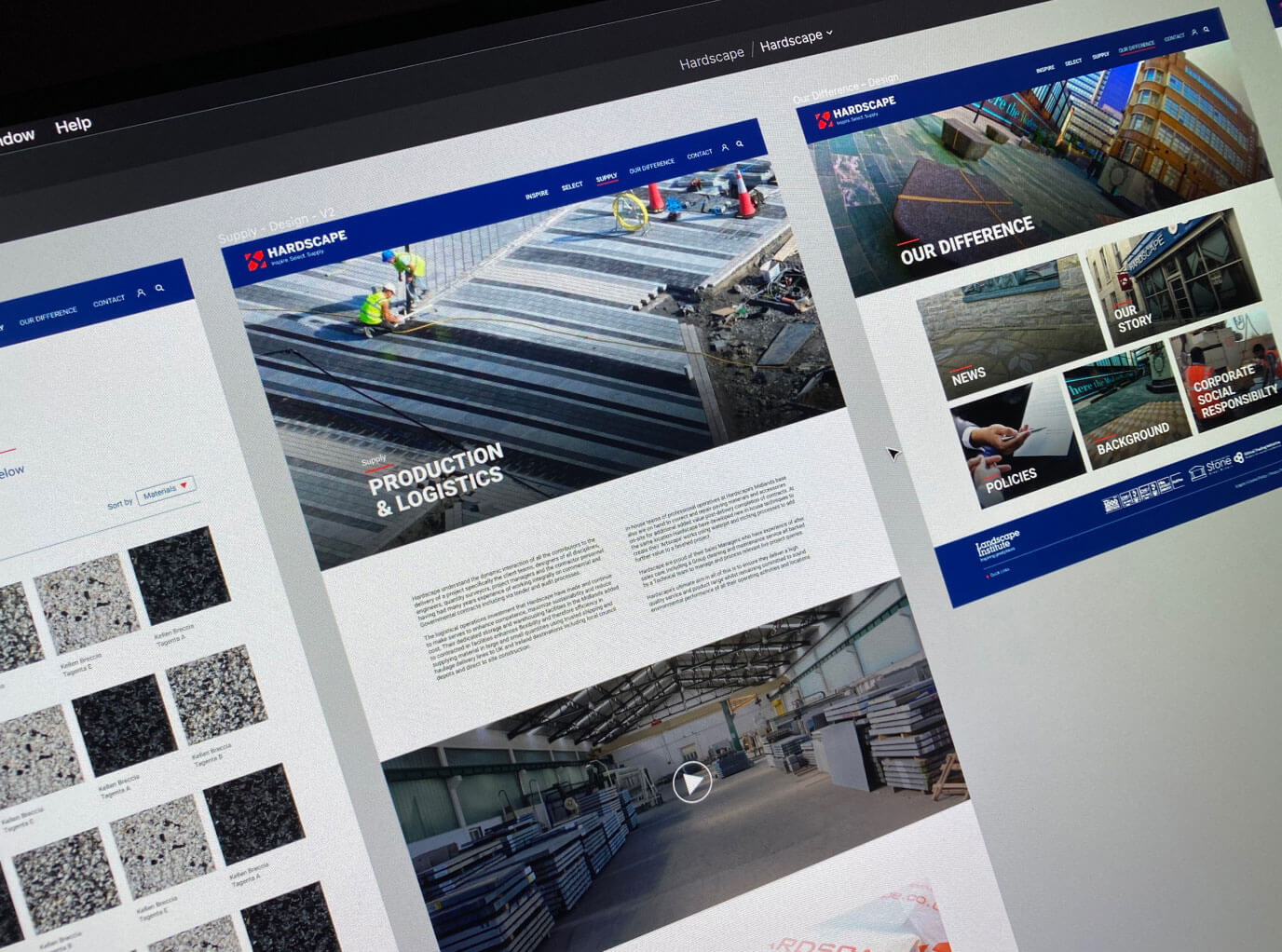Why does a platform need a brand language?
User experience starts with a visitor’s very first interaction.
It entirely dictates their engagement and ultimate brand perception – but for it to be effective, there needs to be a distinct and easily identifiable brand language which guides their way.
This language is your USP, it evidences how your website offers value above and beyond competitors. It’s the specific way in which it delivers its information, products, or services.
It is what the user expects and is actively seeking out.
Brands with established voices are proven to be favoured by their audiences. They deliver consistency which builds user trust. They provide an expectation regarding the quality of the digital experience. Each interaction, placement, and animation within an app or website, should reflect this voice to fulfil the users expectation.
We sat down with our Head of Digital; Robin, and Senior Designer; Paul, to explore their experience in establishing that brand language within each of their digital projects.
An extensive research process for powerful user experience.
“Apps especially accommodate this idea of ‘brand language’. Their development adopts a hyper-focused purpose, in comparison to websites that often act as a hub for multiple sections and areas.
An example of this is banking apps. Users are there for one reason – to view and move money effectively and quickly. However, navigate to the brands corresponding website and you will find an entire platform filled with multiple avenues. Information pertaining to alternative accounts, money advice, credit cards, mortgages and more. It’s a doorway to further spaces.
To succeed with an app, its streamlined purpose needs to align seamlessly with the audience.
This is where research becomes a vital component. Research helps us discover the target users’ expectancies for experience and usability. What are the key uses of this app? How will this be a benefit, beyond that of a website?
We can then ask; how will our brand offer them this in an exceptional way?
Once we understand this, we can create the ideal user experience. If the research stage is rushed, there is a possibility of missing the mark – not only in voice, but in usability too.
During website creation, we commit to creating smooth navigation. However, when usability errors do occur, there is more forgiveness and a chance a user will return with the belief it will be fixed. For an app, users may come across these issues and delete it from their device. There is a very fine chance of gaining that audience back.
This is why research towards a slick interface is of highest importance during app creation. With their evolution across the last twenty years, we can also take the high-scale production process and transition it to a website format.”

Multiple teams in collaboration.
“When we’re first presented with a new digital project, our teams combine for an extensive research period, ensuring the structure of a platform covers the exact expectations of audience. This can then be taken into a workshopping stage, calculating the platforms usage and purpose in response to the research.
When approaching a project, the brand story is an umbrella to all implementations. Every piece of copy written, asset created, and structure built, needs to align with this. The platform must replicate what the audience is expecting and requiring from the brand.
Ultimately allowing us to shape the visuals of the entire site.
So, retaining the story throughout the project is a collaborative effort. Platform development often follows a linear process. One department works towards its specialism, then passes it to the next department, and so on. This process can lead to a slightly disconnected solution.
We know that a successful end product needs to have consistent input from all members across the entire timeline. This includes the client. The client holds the greatest depth of knowledge of their business. They know the intricacies of their product, who will want to use it, and what is expected.
This is the benefit of wireframing. Wireframing can project a structure of the platform to the entire team – before design work has begun. With this effective tool, a narrative can be developed to create a visual understanding of the brand story across the website or app.”

One brand language.
“Wireframing can also lead into design systems to create a fluidity through a platform.
Landing pages can often be implemented in reaction to a campaign or launch – yet they can become detached from the original website design. If multiple designers work on individual landing pages, a unique styling can emerge. Buttons, interactions, fonts, and more can all be slightly diverse from one page to the next, disrupting the continuous flow of the website.
How do we keep everything consistent?
Design systems.
From header banners to image entrance animations – a design system can lay out the guidelines for how every asset should be presented to a user.
A design system is a collection of: Components, articles, examples, code snippets, screenshots, design guidelines, philosophies and other digital assets. These can be shared and used across a digital products team to create harmony and standards when developing their application.
It helps define not only the what but the why behind the design and unites a company’s ethos across all divisions of the business.
However, making sure this language represents the brand’s tone of voice is key. Even the most minor interactions and touchpoints need to be considered, including form confirmations and tooltips.
Is your brand voice positive? Allocate a ‘Thank you!’ card to pop up when the form is sent. It’s these elements which create an exceptionally strong tone of voice.”

How do we determine if user experience is effective?
Once a feature launches, you need to engage in active testing.
Digital insight tools offer an analytical view of user behaviour. From clicks to time per page, we can understand how an audience reacts within a platform. Hotjar is an ideal metric tool for this. With the ability to see how users are interacting with new features, it’s easier to understand if user experience has been enhanced.
Or we can opt for a more traditional method – A/B or ‘split’ testing.
Imagine a video placed within a banner. It’s exciting. It’s bright. It fits with the brand. Yet different stakeholders within the organisation are keen to remove it. Would this be the right thing to do?
If an A/B test was implemented, we could trial it between two sets of users.
One set of users receives a page with the video implemented, and one without.
By using this method, subjective opinion is completely removed and allows the user to tell us their preference; based on their interactions.
We can then ask ourselves:
- Do they spend longer on the page with a video?
- Do they have a more unique experience on the site with it there?
- Is this video fitting the language of the website?
Everything should be data-driven.
Want to find out how ‘brand language’ can create a powerful user experience for your business? Contact our team.
Share this
